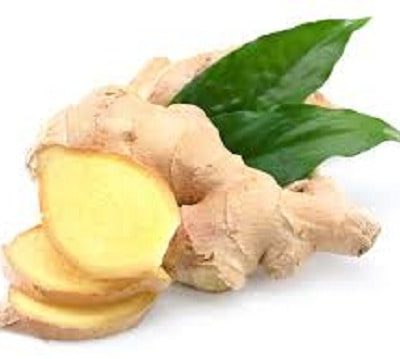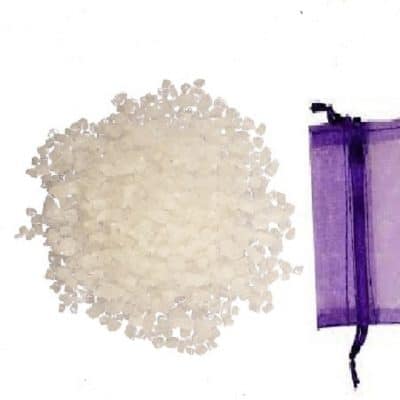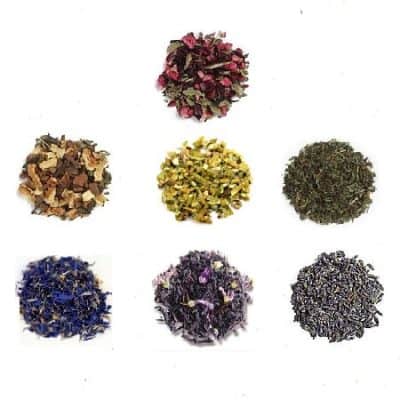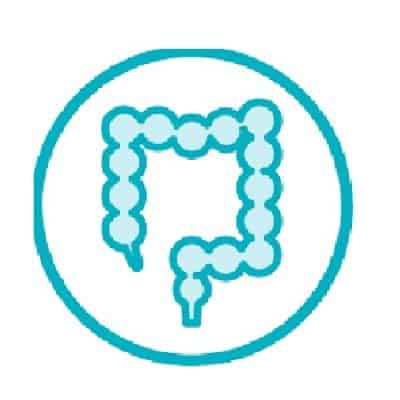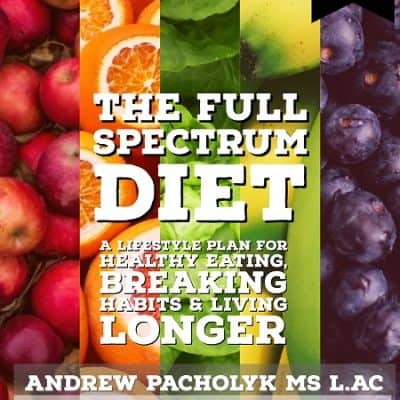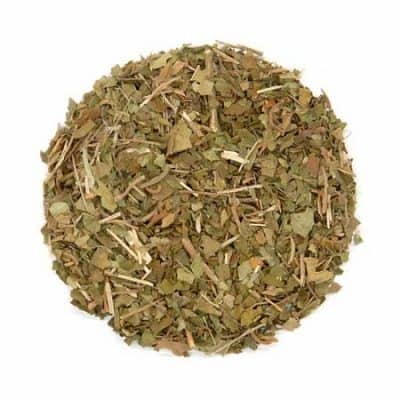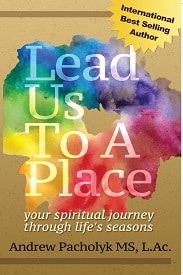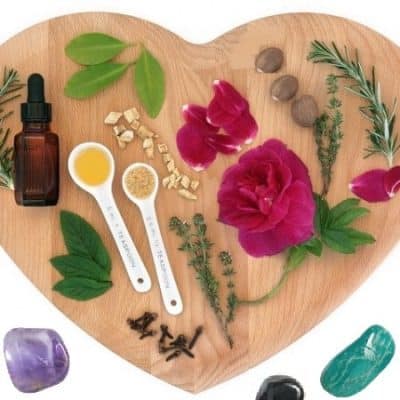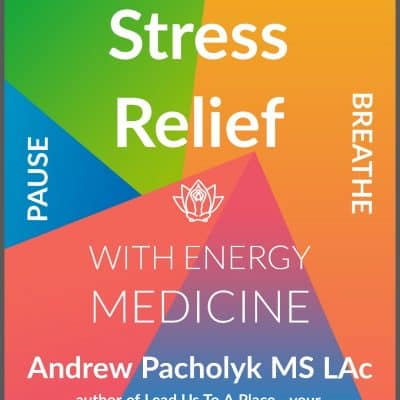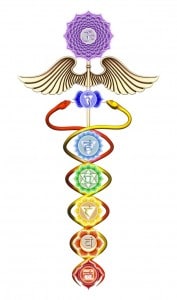 Gut Health
Gut Health
See also: acid reflux, acupuncture, anxiety, cancer, celiac disease, constipation, crohn’s disease, diarrhea, full spectrum diet, diverticulosis, gastroesophageal reflux disease (GERD), hiatal hernia, irritable bowel syndrome, pain management, ulcers, stress
Our digestive system starts from the opening of the mouth to the tip of the anus. That is one large system, with a lot of opportunity for things to go wrong along the way! The digestive tract is divided into four structures; the upper gastrointestinal tract (G.I), the middle G.I. tract, the lower G.I. tract and the G.I. wall structure. The basic functions of the G.I tract are motility, secratory, digestion and absorption.
The upper GI tract begins at the mouth, where digestion begins with chewing. Saliva containing mucus and an enzyme called amylase is secreted from three pairs of salivary glands. Mucus moistens the food and amylase partially digests the starches (polysaccharides). Food moves through the pharynx and esophagus where it then reaches the stomach. This is the cephalic phase, which is initiated when sight, smell, taste, chewing, and emotional states stimulate receptors in the head. Reflexes mediated by sympathetic and parasympathetic fibers activate secretory and contractile activity.
The stomach is the hollow organ that stores and digests a large portion of food which is broken down into a solution called chyme. Glands lining the stomach secrete hydrochloric acid that dissolves food particles and protein-digesting enzymes, called pepsin. The pancreas is a gland located behind the stomach. From its exocrine portion it secretes digestive enzymes and a fluid rich in HCO3- ions to neutralize the acid from stomach. The liver secretes bile. Bile contains HCO3- ions and bile salts to soluble fats. Bile reaches the gall bladder through hepatic ducts and is stored in the gall bladder between meals. During a meal, bile is secreted from the gland by smooth muscle contraction and reaches the duodenum portion of the small intestine by the common bile duct. This is the gastric phase which is initiated by distension, acidity, and the presence of amino acids and peptides in the stomach. This phase is mediated by short and long reflexes and activates the secretion of gastrin.
The small intestine is where most of the nutrient absorption occurs during digestion. The small intestine is divided into 3 segments; the duodenum, jejunum, and ileum. Amino acids, mineral salts and monosaccharides are absorbed by a transporter mediated processes as fatty acid (water) diffuse passively through the system. Undigested material is passed to the large intestine, where it is temporarily stored and concentrated by re-absorption of salts and water. Finally, catastalsis is the rhythmic contraction and relaxation of the muscle of the intestines. The last part of large intestine expels the feces through the anus. This is the intestinal phase which is initiated by distension, acidity, osmolarity of digestive products in intestine and is mediated by GI hormones and short and long neural reflexes.
GI Tract
BOTTOM LINE: The two major causes of almost every gastrointestinal disorder is diet and stress!
Food as medicine has been used for centuries to treat a wide variety of disorders. Used for prevention as well as treating symptoms, the healing power of food and herbs has been documented for centuries. By making bad nutritional choices, over and over, you literally assault your digestive system with substances that tax the process of digestion, weakening its function and therefore, its ability to do its job with optimum efficiency! Alcohol, coffee, fried foods, highly acidic and spicy foods, excessive anti-inflammatory, smoking, foods difficult to digest are all to blame.
Eating a healthy diet, maintaining a healthy weight, exercising regularly and quitting smoking if you smoke, can help protect against practically every digestive disorder as well as, heart disease, osteoporosis and some types of cancer.
Good nutrition is the body’s ability to take in the 45 known nutrients in proper amounts, then digest, absorb and carry these nutrients into the cells, metabolize these nutrients, and eliminate the waste. The following is a list of the 45 known nutrients:
* carbohydrates
* lipids
* proteins
* water
* 9 amino acids
* 13 vitamins
* 19 minerals
Holistic Approach In Treating Gut Health
The Eastern medicine philosophy has known that if your gut is healthy, your entire body is healthy. This Eastern medicine paradigm has been connecting the relationship between the mental, emotional, physical and spiritual outlook for centuries. The Eastern school of thought treats the whole person, as the belief is that nothing works independent of each other, but in conjunction with one another.
A holistic course of action takes into account the mental/emotional, physical and spiritual balance achieved throughout life. It is the accumulation of the whole based on our constitutional health (what we are born with/into) and the lifestyles choices we make during our stay here. Following a holistic lifestyle should be one of continuous education, exploration and self-discovery. So many, many people give their lives and bodies away to the trust of advertisers, doctors, friends and family members.
Learn to listen to your body and your intuition. Trust only your body, as it will do its best to take care of itself. And when it does not, a health professional is a good place to get an idea as to what is happening. But, no matter who you see for your health, I encourage you to get a second and even third opinion. All health care professionals will give you their opinion, based on their expertise, signs, symptoms, physical findings or tests. Again, I stress the word opinion, as this is exactly what it is. An opinion is based on a culmination of information originating from everything including hearsay to practical means. Some practitioner’s scope is broad and far reaching. While other practitioner’s scope of practice is not so amassed or open. Regardless, listen and learn. The more responsibility you take for your health the greater your knowledge grows.
FACT: G.I. disease ranks 3rd in total burden of illness.
FACT: 20 million Americans or one out of nine persons in the USA have digestive diseases.
FACT: G.I. disease causes considerable human suffering, person loss, lost work hours and drains the nation’s economy.
FACT: 60 million Americans suffer from heartburn at least once a month and 25 million are daily sufferers.
FACT: The second leading cause of cancer is colorectal cancer, (lung cancer being the first).
FACT: Functional disorders are those in which the digestive system and bowels look normal but are not working properly. They are the most common problems affecting the colon and rectum, and include constipation and irritable bowel syndrome (IBS). The primary causes for functional disorders include:
Causes of Gut Issues
* Eating a diet low in fiber
* Not getting enough exercise
* Traveling or other changes in routine
* Eating large amounts of dairy products
* Being stressed
* Resisting the urge to have a bowel movement
* Resisting the urge to have bowel movements due to pain from hemorrhoids
* Overusing laxatives (stool softeners) that, over time, weaken the bowel muscles
* Taking antacid medicines containing calcium or aluminum
* Taking certain medicines (especially antidepressants, iron pills, and strong pain medicines such as narcotics)
* Being pregnant
“Andrew’s Best Remedies”
-

“Free Flow” Constipation Tea
$ 21.95 -

Acidophilus Pearls
$ 16.95 -

Acupressure Facial Course
$ 99.00 -
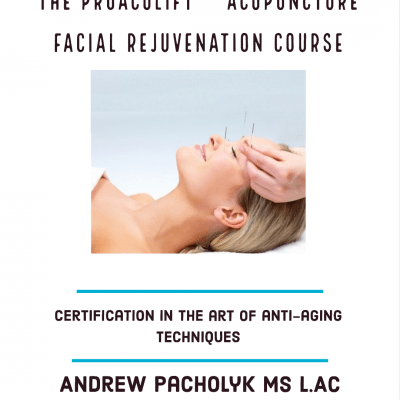
Acupuncture Facial Course
$ 299.95 -
Sale!
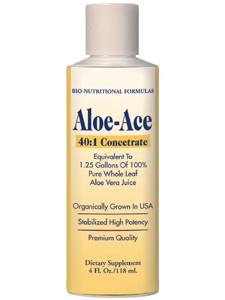
Aloe Vera Liquid
Original price was: $ 34.95.$ 31.95Current price is: $ 31.95. -
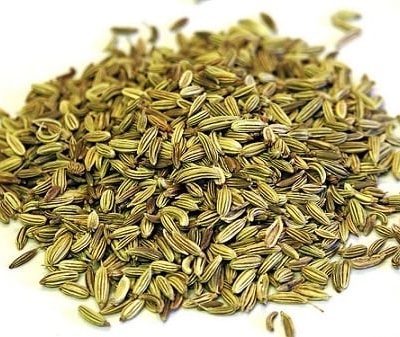
Angel’s Mist Fennel Essential Oil
$ 12.00 -
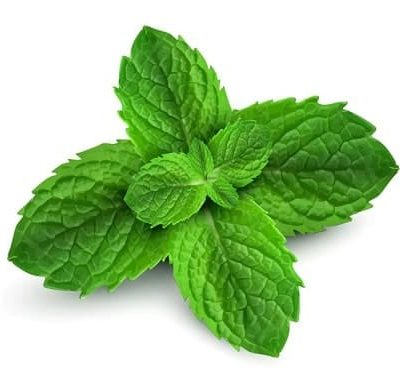
Angel’s Mist Peppermint Essential Oil
$ 9.00 -
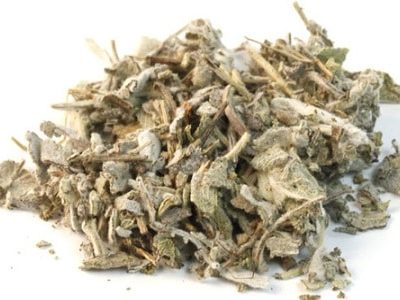
Angel’s Mist Sage Essential Oil
$ 18.00 -
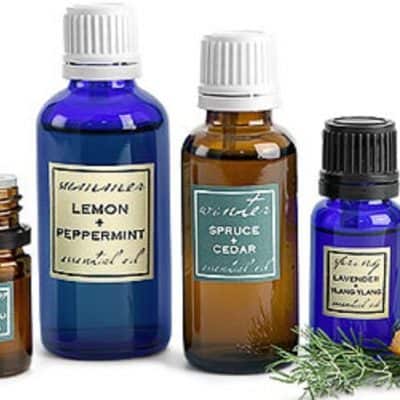
Angel’s Mist Aroma Remedy Blends
$ 19.95 -

Apple Cider Vinegar 12 oz
$ 8.95 -
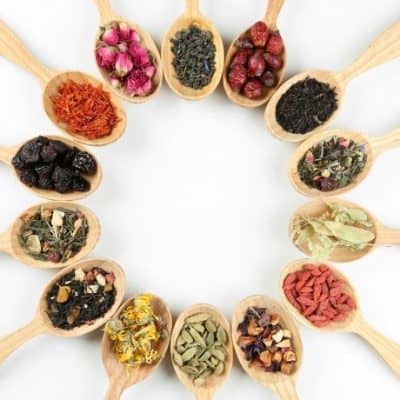
AromaThera-Teas by the Pound
$ 29.95 -
Sale!
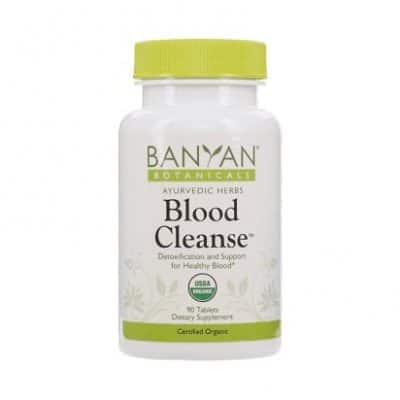
Blood Cleanse 500 mg 90 tabs
Original price was: $ 39.95.$ 37.50Current price is: $ 37.50. -
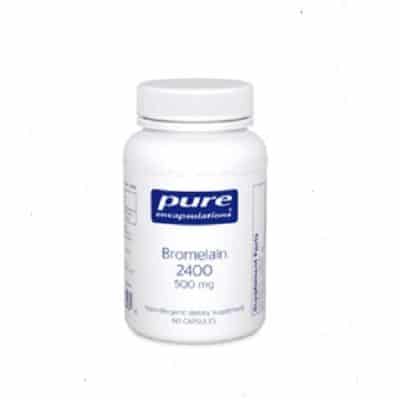
Bromelain
$ 29.95 -

Chinese Massage Oil
$ 21.95 -

Circulatory Health
$ 21.95 -
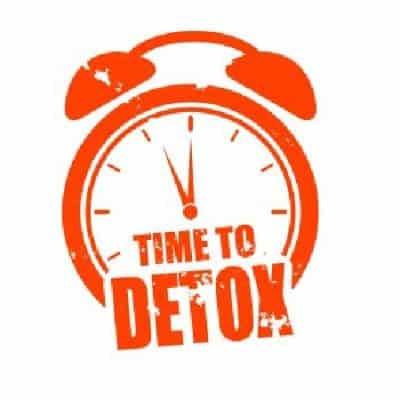
Cleanse & Detox Tincture
$ 21.95 -
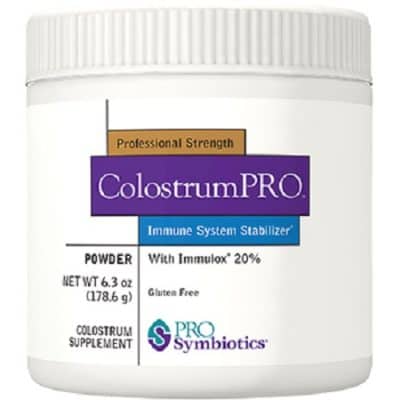
ColostrumPRO Powder
$ 64.95 -
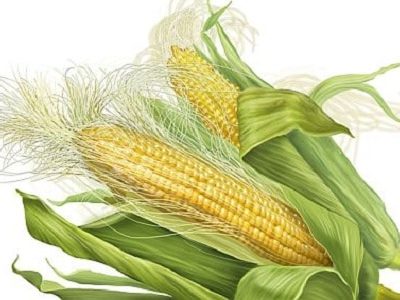
Corn Silk Tincture
$ 19.00 -
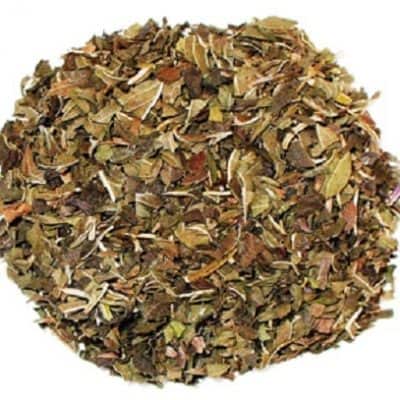
D-tox Tea
$ 8.95 -

Dandelion Tincture
$ 19.00 -
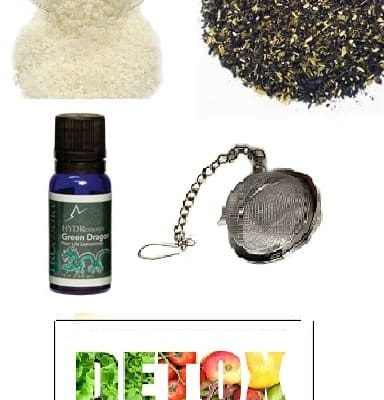
Detox Complete System
$ 49.95 -

Diabetes Support
$ 21.95 -
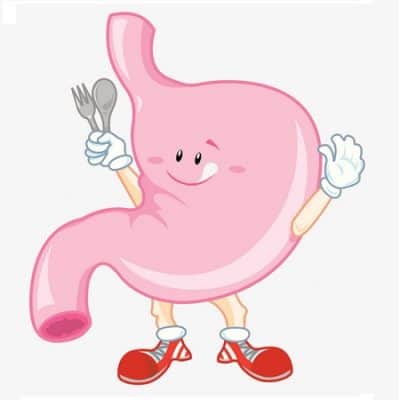
Digestive Balance
$ 21.95 -

Digestive Enzymes Ultra
$ 38.00 -

Digestive Tea
$ 8.95 -

Drainage-Tone Formula
$ 38.00 -

Flaxseed Oil Gel Caps
$ 19.95 -
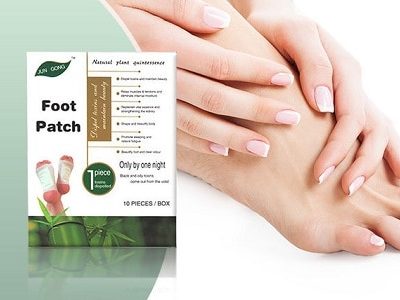
Foot Detox Patches
$ 29.95 -
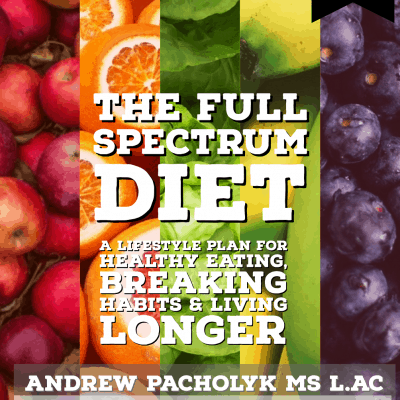
Full Spectrum Diet and Kit
$ 39.95 -

G.I Detox 60 caps
$ 31.95 -
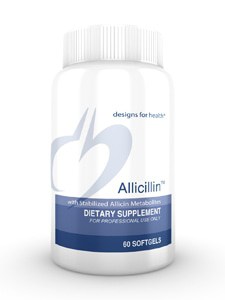
Garlic Allicillin™ 60 gels
$ 29.95 -
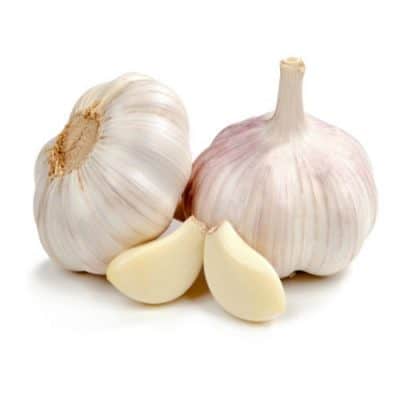
Garlic Tincture
$ 19.00 -

GI Fortify
$ 39.95 -
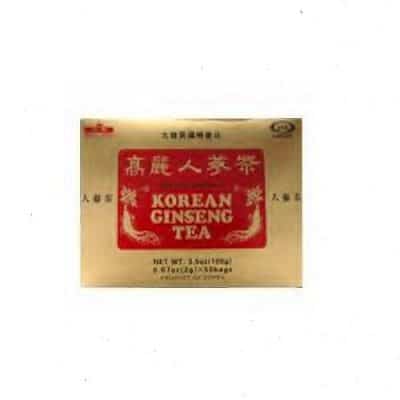
Ginger Tea Granules
$ 8.95 -
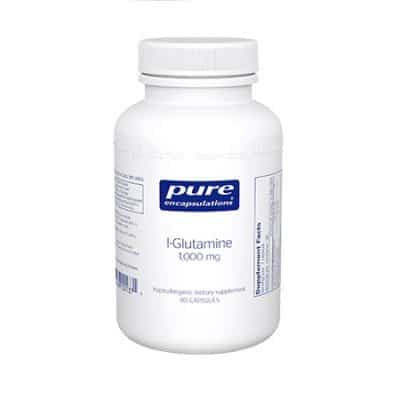
Glutamine
$ 29.95 -

Gluten/Dairy Digest
$ 38.00 -
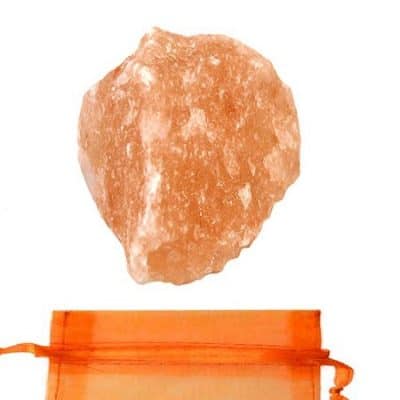
Himalayan Salt Raw
$ 1.95 -
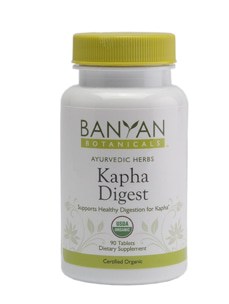
Kapha Digest 500 mg 90 tabs
$ 34.95 -
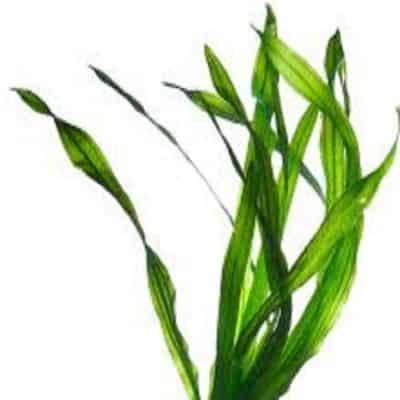
Kelp Tincture
$ 19.00 -
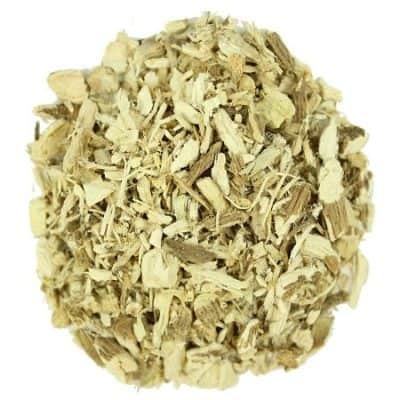
Marshmallow Root Tincture
$ 19.00 -
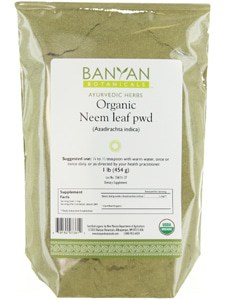
Neem Powder 1/2 lb (Certified Organic)
$ 19.95 -
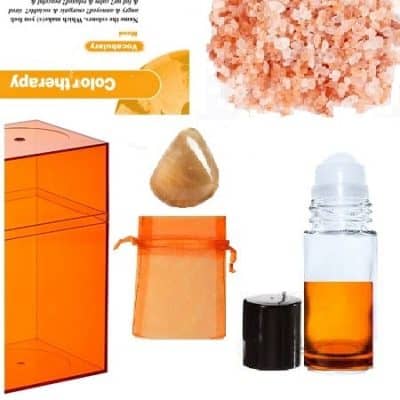
Orange Color Therapy Kit
$ 24.95 -
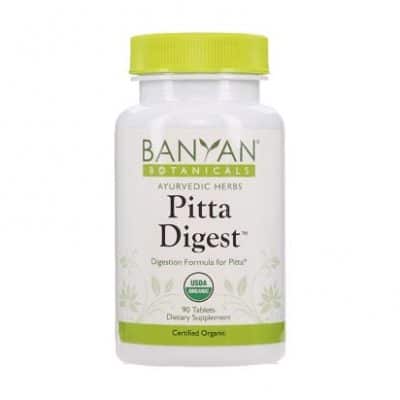
Pitta Digest 500 mg 90 tabs
$ 34.95 -

Pro-Omega-3 120 Lemon
$ 49.95 -

Pro-Omega-3 60 Lemon
$ 28.00 -
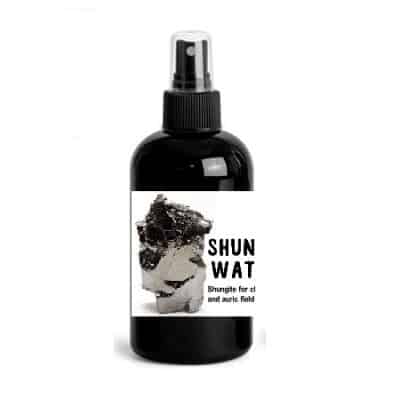
Shungite Energy Water
$ 14.95 -
Sale!
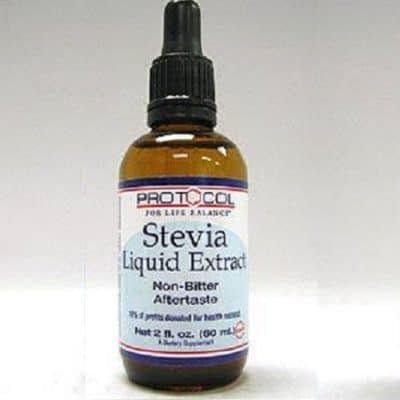
Stevia Liquid Extract
Original price was: $ 14.00.$ 11.95Current price is: $ 11.95. -
Sale!
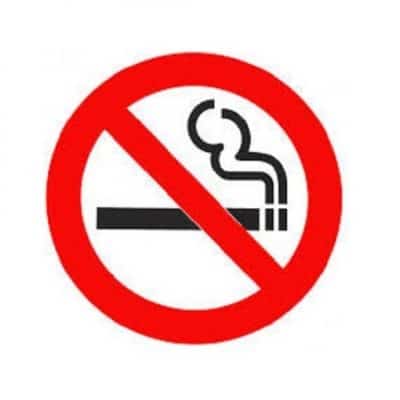
Stop Smoking Kit
Original price was: $ 49.95.$ 44.95Current price is: $ 44.95. -
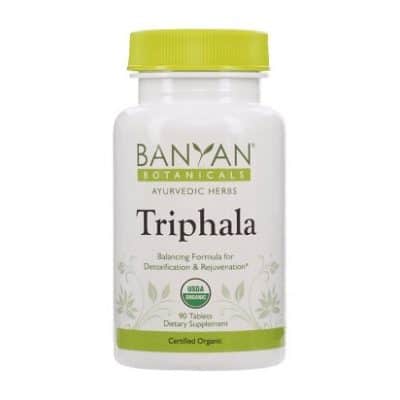
Triphala
$ 34.95 -
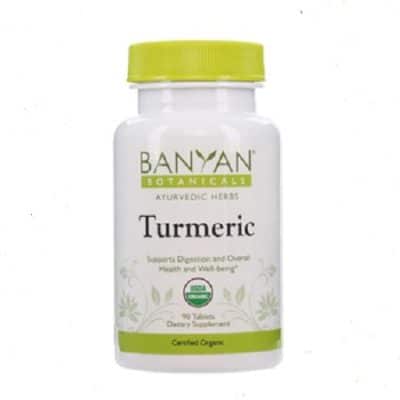
Turmeric Tabs
$ 24.95 -

Vata Digest 500 mg 90 tabs
$ 34.95 -
Sale!
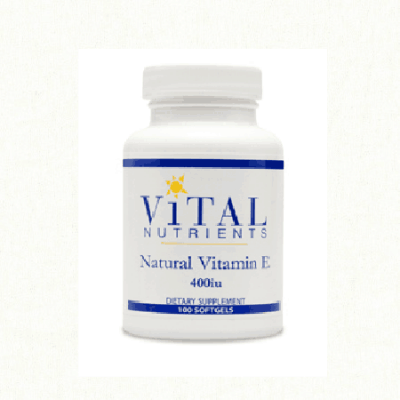
Vitamin E
Original price was: $ 21.95.$ 19.95Current price is: $ 19.95. -

White Flower Oil
$ 14.95 -
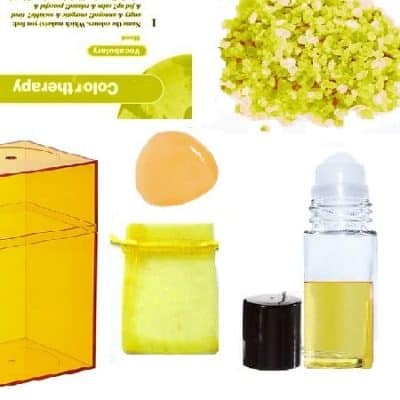
Yellow Color Therapy Kit
$ 24.95 -

Yoga Detox Ebook
$ 9.95
Disorders of the GI Tract
1. Celiac disease, also called celiac sprue, is a digestive disorder that occurs when an individual’s immune system overreacts to the protein gluten, or other proteins within gluten such as gliadin, found in grains including wheat, rye, barley, and to some degree, oats. When a patient with the disease eats food that contains gluten, the immune system’s response damages the intestinal lining. This causes symptoms of abdominal pain and bloating after consuming gluten. Additionally, complications, including poor absorption, may occur if the patient continues to eat gluten-containing foods. When the intestinal lining is damaged, patients have difficulty absorbing nutrients. It has not been determined what triggers this reaction in celiac patients. However, celiac disease is associated with autoimmune disorders, such as lupus. Autoimmune disorders occur when the patient’s immune system mistakenly identifies body cells as harmful invaders, such as bacteria. As a result, the immune cells in celiac patients attack the patient’s intestinal cells.
2. Constipation is the difficult passage of stools (bowel movements) or the infrequent (less than three times a week) or incomplete passage of stools. Constipation is usually caused by inadequate “roughage” or fiber in the diet, or a disruption of the regular routine or diet. Constipation causes a person to strain during a bowel movement. It might include small, hard stools, and sometimes causes anal problems such as fissures and hemorrhoids. Constipation is rarely the sign of a more serious medical condition. Treatment of constipation includes increasing the amount of fiber you eat, exercising regularly, and moving your bowels when you have the urge (resisting the urge causes constipation). If these treatment methods don’t work, laxatives are a temporary solution. Note that the overuse of laxatives can actually aggravate symptoms of constipation. Always follow the package instructions on the laxative medicine, as well as the advice of your doctor.
3. Colitis is conditions that cause an inflammation of the bowel. There are several types of colitis, these include:
-Infectious colitis
-Ulcerative colitis (cause not known)
-Crohn’s disease (cause not known)
-Ischemic colitis (caused by blood circulation to the colon)
-Radiation colitis (after radiotherapy)
Colitis causes diarrhea, rectal bleeding, abdominal cramps, and urgency (frequent and immediate need to empty the bowels). Treatment depends on the diagnosis, which is made by colonoscopy and biopsy.
Each year 130,000 Americans are diagnosed with colorectal cancer, the second most common form of cancer in the United States. Fortunately, with advances in early detection and treatment, colorectal cancer is one of the most curable forms of the disease. By using a variety of screening tests, it is possible to prevent, detect, and treat the disease long before symptoms appear.
The importance of screening Almost all colorectal cancers begin as polyps, benign (non-cancerous) growths in the tissues lining the colon and rectum. Cancerdevelops when these polyps grow and abnormal cells develop and start to invade surrounding tissue. Removal of polyps can prevent the development of colorectal cancer. Almost all precancerous polyps can be removed painlessly using a flexible lighted tube called a colonoscope. If not caught in the early stages, colorectal cancer can spread throughout the body. More advanced cancer requires more complicated surgical techniques. Most early forms of colorectal cancer do not cause symptoms, which makes screening especially important. When symptoms do occur, the cancer might already be quite advanced. Symptoms include blood on or mixed in with the stool, a change in normal bowel habits, narrowing of the stool, abdominal pain, weight loss, or constant tiredness. Most cases of colorectal cancerare detected in one of four ways:
– By screening people at average risk for colorectal cancer beginning at age 50
– By screening people at higher risk for colorectal cancer (for example, those with a family history or a personal history of colon polyps or cancer)
– By investigating the bowel in patients with symptoms
– A chance finding at a routine check-up
Early detection is the best chance for a cure.
5. Diarrhea is the frequent passing of loose or watery stools. Acute diarrhea, appears rapidly and may last from one to ten days. Chronic diarrhea lasts much longer and is the second cause of childhood death in the developing world. Diarrhea is sometimes accompanied by abdominal cramps or fever. It may be caused by infection, allergy, or could be a sign of a serious disorder, such as IBD (inflammatory bowel disease), which is Ulcerative Colitis or Crohn’s disease. Treatment of diarrhea is often accomplished with the B.R.A.T. diet which stands for Bananas, Applesauce, Rice and Toast (dry)….these are known foods to bulk up stools when sick or have diarrhea.
6. Diverticular disease or Diverticulosis is the presence of small outpouchings (diverticula) in the muscular wall of the large intestine that form in weakened areas of the bowel. They usually occur in the sigmoid colon, the high-pressure area of the lower large intestine. Diverticular is very common and occurs in 10 percent of people over age 40 and in 50 percent of people over age 60 in Western cultures. It is often caused by too little roughage (fiber) in the diet. Diverticulosis rarely causes symptoms. Complications of diverticular disease happen in about 10 percent of people with outpouchings. They include infection or inflammation (diverticulitis), bleeding, and obstruction. Treatment of diverticulitis includes antibiotics, increased fluids, and a special diet. Surgery is needed in about half the patients who have complications to remove the involved segment of the colon.
7. Heartburn occurs when a muscular valve, called the lower espophageal sphincter functions improperly, which allows stomach acid to back up into the esophagus. This tube, which leads from the stomach to the throat can be greatly effected by stomach acid, causing a burning, painful sensation in this area. Lack of proper enzymes are also a cause. Heartburn, indigestion, acid reflux are all usually defined by a vague chest or abdominal discomfort or burning in the solar plexus area, with no apparent organic cause, that occurs during or soon after eating, drinking, or stressful situations.
8. Irritable bowel syndrome (IBS) (also called spastic colon, irritable colon, or nervous stomach) is a condition in which the colon muscle contracts more readily than in people without IBS. A number of factors can trigger IBS including certain foods, medicines, and emotional stress. Symptoms of IBS include abdominal pain and cramps, excess gas, bloating, and a change in bowel habits such as harder, looser, or more urgent stools than normal. Often people with IBS have alternating constipation and diarrhea. Treatment includes avoiding caffeine, increasing fiber in the diet, monitoring which foods trigger IBS (and avoiding these foods), minimizing stress or learning different ways to cope with stress, and sometimes taking medicines as prescribed by your health care provider.
9. Hemorrhoids are swollen blood vessels that line the anal opening caused by chronic excess pressure from straining during a bowel movement, persistent diarrhea, or pregnancy. There are two types of hemorrhoids: internal and external.
a). Internal hemorrhoids are normal structures cushioning the lower rectum and protecting it from damage by stool. When they fall down into the anus as a result of straining, they become irritated and start to bleed. Ultimately, internal hemorrhoids can fall down enough to prolapse (sink or protrude) out of the anus. Treatment includes improving bowel habits (such as avoiding constipation, not straining during bowel movements, and moving your bowels when you have the urge), using elastic bands to pull the internal hemorrhoids back into the rectum, or removing them surgically. Surgery is needed only for a small number patients with very large, painful, and persistent hemorrhoids.
b). External hemorrhoids are veins that lie just under the skin on the outside of the anus. Sometimes, after straining, the external hemorrhoidal veins burst and a blood clot forms under the skin. This very painful condition is called a pile. Treatment includes removing the clot and vein under local anesthesia in the doctor’s office.
10. Fissures (anal) are splits or cracks in the lining of the anal opening. The most common cause of an anal fissure is the passage of very hard or watery stools. The crack in the anal lining exposes the underlying muscles that control the passage of stool through the anus and out of the body. An anal fissure is one of the most painful problems because the exposed muscles become irritated from exposure to stool or air, and leads to intense burning pain, bleeding, or spasm after bowel movements. Initial treatment for anal fissures includes pain medicine, dietary fiber to reduce the occurrence of large, bulky stools, and sitz baths (sitting in a few inches of warm water). If these treatments don’t relieve pain, surgery might be needed to decrease spasm in the sphincter muscle.
11. Fistula (anal), often follows drainage of an abscess and is an abnormal tube-like passageway from the anal canal to a hole in the skin near the opening of the anus. Body wastes traveling through the anal canal are diverted through this tiny channel and out through the skin, causing itching and irritation. Fistulas also cause drainage, pain, and bleeding. They rarely heal by themselves and usually need surgery to drain the abscess and “close off” the fistula. Sometimes the skin glands near the anus become infected and need to be drained. Just behind the anus, abscesses can form that contain a small tuft of hair at the back of the pelvis (called a pilonidal cyst).
12. Perianal abscesses can occur when the tiny anal glands that open on the inside of the anus become blocked, and the bacteria always present in these glands cause an infection. When pus develops, an abscess forms. Treatment includes draining the abscess, usually under local anesthesia in the doctor’s office.
13. Ulcers: Peptic ulcers are a group of ulcerative disorders that occur in the area of the upper GI tract that are exposed to acid-pepsin secretion. There are mainly two groups:
Gastric ulcers – gnawing, burning pain present, usually after taking food
Duodenal ulcers – pain present on an empty stomach, relieved by eating.
An ulcer is caused when the mucosal lining of the stomach has deteriorated, allowing digestive acids to eat away at the underlying tissue. They are painful and can be very dangerous if left untreated. Other symptoms, other than pain, can present as bleeding, obstruction or perforation.
Heliobacter pylori (H pylori) is an S-shaped bacterium that colonizes in the mucus secreting epithelial cells of the stomach. Since it has multiple flagella, the bacterium moves and produces urease, which allows it to buffer the acid environment of the stomach and live there. The barrier lining of the stomach often becomes available to infection due to alcohol intake which can disrupt the lining. Too much intake of NSAIDS such as aspirin also irritate the inner lining of the stomach.
Managing Your Lifestyle Choices
Lifestyle factors include situations that occur during our lifetime based on our choices, such as smoking, chemical dependency, obesity, type 2 diabetes and dietary choices. Of course it is never just one factor that is an indicator of this change, but a host of factors accumulating over a lifetime. Many times, the symptoms from the aging process are confused with symptoms of poor gut health.
In general, symptoms associated with the aging process include: weight gain, change in sleep patterns, hearing loss, a rise in blood pressure and/or high cholesterol. With age, several of our bodily functions slow down and that includes our digestive tract. As we age, the muscles in the digestive tract become weaker, more stiff and less efficient. The tissues are more likely to become damaged because new cells aren’t forming as quickly as they did when we were younger. Our body makes enzymes called metabolic enzymes. These enzymes are responsible for every action that takes place in our body including digestion. The enzyme makeup in the body includes protease, which breaks down protein, amylase, which breaks down carbohydrate and starch, and lipase, which breaks down fat. These three enzymes break down the majority of the types of food we eat. Also, lactase, which breaks down lactose (dairy), maltase and sucrase, which breaks down food sugars, as well as cellulase, which breaks down cellulose, which is needed by those with food allergies.
Gastroparesis is a disorder in which food takes a long time to clear the stomach, resulting in many unpleasant symptoms.
Artery blockages can affect blood flow to the bowels, a condition called intestinal ischemia during which blood flow to the intestines decreases in a similar way to what happens with a heart attack. More systemic problems that are more common with age are really the reason for digestive tract issues.
Here are some of the digestive tract problems that can occur as we get older:
-gas
-heartburn
–peptic ulcers
–diarrhea
-constipation
-hemorrhoids
-irritable bowel syndrome
–diverticulitis
I suffer from poor digestion and immune issues...
Answer: Look into Andrew’s Full Spectrum diet
I do not know which are the best supplements to compliment my health program?
Answer:
Men: Men’s multi-vitamin
Women: Women’s multi-vitamin
Andrew’s best digestive formula learn more?
Omega 3 formula learn more?
Gluten Digest learn more?
GI Fortify Immunity learn more?
Pure Energy Smoothie learn more?
I need a safe way to detox...
Download Andrew’s amazing ebook
The Yoga Detox Ebook
learn more?
Andrew’s Complete Detox Kit
learn more?
Homeopathic Detox Kit
learn more?
Emotional stress affects my stomach..
Download Andrew’s book
Stress Relief with Energy Medicine here.
I need some additional support mentally and spiritually...
Aroma Remedy Indigestion Blend learn more?
Crystal Meditation Pouch learn more?
Remedy Bags learn more?
Create a Worry Free Journal learn more?
The Power of Spirituality learn more?
The Brain In Your Gut
There is more and more evidence that the gut is our second brain! Does your stomach get tied in a knot the minute you begin to worry? Does your stomach react to stressful situations like an argument, job interview or a problems at work? These are common physical responses to emotional stress. Like your brain, the gut is highly sensitive and has a strong nerve center, so that when a stressful situation occurs, your gut reacts. When the tensions of your daily life are giving you digestive problems, it is important to identify the cause of this stress and understand how to keep it under control, which in turn will help to quiet your stomach.
The gut is often the most neglected part of our bodies, until we experience stomach upset, diarrhea or pain. This is often a sign bacterial upset with an imbalance between the good bacteria and the bad bacteria in the gut. The body contains huge numbers of bacteria, naturally. The number of bacteria in the gut is ten times the total number of cells in the entire human body. These bacteria are part of a complex eco-system in the gut called intestinal flora or gut flora. The gut flora performs a number of useful functions in the body and is important for good health.
The gut/brain connection has several different pathways, which communicate between each other and this can lead to an upset stomach and other digestive problems as a result of stress. Emotional stress can manifest as diarrhea, constipation, upset stomach or even persistent stomachaches.
It is a fact that the celiac plexus, also known as the solar plexus, is a complex network of nerves that are located in the abdomen, where the celiac trunk, superior mesenteric artery, and renal arteries branch from the abdominal aorta. This plexus is formed by the greater and lesser splanchnic nerves (which are paired nerves that contribute to the innervation of the organs) on both sides, as well as parts of the right vagus nerve (which conveys sensory information about the state of the body’s organs to the central nervous system).
Digestive Enzymes
Enzymes are responsible for digesting, absorbing, transporting, metabolizing and eliminating the waste of these nutrients. Every organ, tissue, and all 100 trillion cells in the body depend on the reaction of metabolic enzymes and their energy. Eating these 45 known nutrients and their enzymes, in their proper amounts, will normally ensure good nutrition.
A decrease in HCL: Hydrochloric Acid (HCL) is extremely important in our digestive process. It starts the digestion of protein and stimulates the pancreas to produce digestive enzymes and bile. Without enough digestive enzymes and bile, we cannot adequately digest or absorb carbohydrates, proteins, and fats. If the stomach were not protected by mucus, hydrochloric acid (HCL) would burn the stomach lining. This powerful acid protects us from harmful bacteria, which includes what we may ingest with foods is dissolved by HCL. HCL also helps keep the three pounds of bacteria found in the colon from moving up into the small intestine. If this happens, “bad bacteria” and as well as, yeast can establish ground in the intestine, resulting in less than optimum absorption of nutrients and inflamed intestines.
When we are not able to digest foods well, there may be three problems that arise:
1. We don’t get the nutrition we need.
2. Poorly digested foods continue through the digestive tract. Some of the larger particles move through the intestine into the bloodstream. The inflamed intestines make this easier. These larger particles are seen as invaders by the immune system and are attacked. The result is food allergies. It is estimated that 80 percent of patients with food allergies suffer from some degree of impaired hydrochloric acid secretion in the stomach.
3. When it takes food longer to move through the digestive system, the results is an overgrowth of unfriendly bacteria in the small intestine and colon. When these bad bacteria begin to out number the good bacteria, a condition known as dysbiosis occurs. Dysbiosis may result in such diverse conditions as arthritis, autoimmune disease, vitamin B12 deficiency, chronic fatigue syndrome, eczema, food allergies and food sensitivities, inflammatory bowel disease, and irritable bowel syndrome. (B12 is the remedy for this. 3000 – 4000 mcg per day for 3 weeks)
Antacids can be a large part of the problem. Antacids buffer the stomach from the HCL, which also blocks it from doing its part in the digestive process. Therefore, someone who has too little HCL and who takes antacids will have even less HCL available to do its digestive job. Antacids also change the stomach’s pH, which can adversely affect the “good†bacteria. Taking antacids, then, can make the problem of hypochlorhydria even worse. (Acid Ease is the remedy for this). Dosage is 5 capsules, 3 times per day for 30 days.
The best way to pinpoint hypochlorhydria is to ask your health practitioner for a Heidelberg test. This test accurately measures how much HCL the stomach is producing, and if your problem is not hypochlorhydria, this test will help your health practitioner accurately diagnose your problem. Fortunately, the Heidelberg test is not required to arrive at a correct diagnosis of too little stomach acid. You can perform a gastric acid self-test at home using some betain HCL capsules taken with meals. If digestion improves you’re hydrochloric acid deficient.
An easy way to assist digestion is to take digestive enzymes. These help the enzymes created naturally by the pancreas; therefore, foods are digested more quickly and more completely. When choosing a digestive enzyme, choose one that contains a wide spectrum of enzymes. This is important because the macronutrients found in foods are “enzyme-specific” – a specific enzyme works on a specific macronutrient. For example, any formula you take should include lipase to digest fats, protease to digest protein, and amylase to digest carbohydrates. It would also do well to include cellulase to digest fiber, sucrase to digest white sugar, and maltase to digest malt sugar.
***
Top 10 Herbal Remedies
Herbal medicine is a wonderful preventative solution. Complications can arise when taking herbal medicine and allopathic drugs your doctor has prescribed. Great caution should be used especially if you are on blood thinners, diuretics or any other heart related medication. Consult your doctor with any questions you may have, before taking additional herbs or supplements.
1. Cardamom, warms up the digestive tract, speed up and increase the thoroughness of digestion, and reduce gas.
2. Cinnamon Cassia: In Ayurveda, this warming spice reduces vata and kapha and is traditionally used in cold formulas, regulates blood sugar and is used for strengthening digestion. Cinnamon is a useful remedy for sluggish digestion. The German Commission E recommends it for loss of appetite, dyspeptic complaints, bloating and flatulence.
3. Fennel Seed: Foeniculum vulgare is a common spice that is traditionally used to improve digestion and absorption without increasing pitta. The seeds are also chewed after meals to freshen the breath and alleviate gas.
4. Flaxseed Oil is an edible oil derived from the seeds of the Flax plant (Linum usitatissimum) and is one of the best plant sources of the Omega-3 fatty acid Alpha-Linolenic Acid available. Naturally occurring constituents in Flaxseed Oil may help to balance the production of prostaglandins and support cardiovascular and bowel health.
5. Ginger Root: In Chinese Medicine and Ayurveda it is used as a general panacea that is especially useful for digestive and respiratory complaints. Also dispels nausea and acts as a diaphoretic. Ginger is a time-tested digestive remedy for stomach upset. European practitioners also use ginger in tea for indigestion. It reduces spasms and increases the secretion of digestive juices, including bile and saliva. Ginger contains ingredients that soothe the gut and aid digestion by increasing peristalsis that moves food through the intestine. Use 1 teaspoon of the chopped root brewed as tea, three times a day.
6. Licorice root (Glycyrrhiza glabra) guards digestive mucous membranes by increasing the production of mucin, a secretion that protects gut linings against stomach acid and other digestive juices. Deglycyrrhizinated licorice root (DGL) removes the glycyrrhizic acid (the ingredient in licorice root associated with the possibility of increasing blood pressure and water retention). The soothing part of the root, however, remains intact in DGL. Use 1 teaspoon of the chopped herb brewed as tea, three times a day, or 1 to 2 chewable wafers of DGL (250 to 500 mg) 15 minutes before meals and one to two hours before bedtime.
7. Parsley Leaf: Natural diuretic, parsley helps eliminate wastes and lessen water retention, which can aid in weight loss. Its high enzyme content improves digestion of proteins and fats and absorption of nutrients. Parsley is a natural breath freshener.
8. Peppermint: is a well-known digestive herb for easing tummy troubles. Enteric-coated peppermint oil capsules work well to prevent dyspepsia. Peppermint oil is a relaxant for the muscles of the intestinal wall. The essential oil can be massaged over the belly to relieve spasms. Take 1 teaspoon the liquid tincture or the dried leaf, brewed as tea, three times a day, or 0.2 to 0.4 ml of an enteric-coated capsule three times a day.
9. Triphala: This formula cleanses the entire GI tract, supporting digestion and gently maintaining regulartity. Considered in Ayurveda to be general panacea for all doshas, it is also used to support weight management, improve the complexion and strengthen the urinary tract.
10. Turmeric: A traditional Indian cooking spice that improves digestion and purifies the blood. Believed to act as a natural antibiotic and antiseptic.
Top 12 Digestive Supplements
This is one of my favorite areas and should be differentiated for our specific purposes. For overall digestive wellness it is important to maintain optimum balance. This can be done by the following:
1. Blueberries are one of most extensively studied functional foods. Their deep blue pigmentation is a result of a powerful class of flavonoid compounds known as anthocyanadins. The result of blending several of these powerful antioxidants have shown to have incredible results.
2. Bromelain is a proteolytic enzyme from the stem of the pineapple plant. Taken with food, bromelain assists in the proper functioning of the digestive system. Taken between meals, bromelain inhibits the production of kinins and fibrin, which promote the inflammatory process.
3. Cleansing Smoothie with Green Powder is a super fiber supplement that is also a natural cleansing formula for a healthy digestive system. Maintaining a healthy digestive system is the goal of a regular cleansing program. Without a proper functioning digestive system we are unable to absorb the nutrients we eat or effectively or eliminate toxins that our bodies generate.
4. Colostrum (Immune Formula): Powerful immunoglobulin active formula that strengthens the immune system. Colostrum, when combined with the powerful immunoglobulin activity of Lactoferrin, enzymes, Beta glucan and olive leaf have shown to be one of the best combinations to strengthen the immune system.
5. Digestive Formulas: These very special Ayurvedic formulas are geared toward the health and well-being of each individual dosha. Maintains healthy digestive acid levels and a healthy stomach lining while supporting a comfortable post-meal experience.
6. Enzymes: Digestive enzymes provides a superior combination of natural plant enzymes precisely balanced for broad spectrum support of digestive function and to help maintain healthy joints and muscles in times of peak stress. This formula contains enhanced levels of protease, amylase and lipase sourced from Aspergillus oryzae. Enzymes promotes healthy levels of kinins and fibrin, thereby helping to maintain normal muscle and joint function.
7. Fish Oil: Omega-3 and polyunsaturated fatty acids found in fish help to protect against heart and blood vessel disease. Natural, essential fatty acids are essential to normal human cell and tissue growth and maintenance as it boosts the immune system. If not found regularly in the diet, the diet must be supplemented. Take 2,000 mg of rich, omega 3 fish oil, in doses of 1,000 mg, twice a day.
8. GI Fortify: supports our intestinal health. It offers the benefits of protein, vitamin C (as ascorbyl palmitate), psyllium husk powder , flax seed powder, lignans l-glutamine (free-form), deglycyrrhizinated licorice extract (root) , marshmallow root (Althaea officinalis), unripe plantain banana (Musa paradisiaca), slippery elm (Ulmus fulva) extract and triphala.
9. Gluten Digest: Daily recommended for lactose intolerance protease and lactase enzymes ensure smooth digestion.
10. Probiotics : These are a group of microbes such as Lactobacillus which help support gastrointestinal function by colonizing areas in your intestines that could otherwise be populated by harmful pathogens. Probiotics are most commonly associated with fermented milk products such as yogurt, kefir and cultured buttermilk and should say “live and active cultures.”
11. Turmeric is a powerful antioxidant, helps with detoxification support, and promotes a healthy inflammation response. Turmeric is a traditional Indian spice and medicine that has been researched for its ability to promote a healthy inflammation response, support cardiovascular health, and support normal cell growth.* Scientists believe turmeric may be responsible for the remarkable brain health observed in people who live in India where the per capita consumption of turmeric is 2 grams a day.
12. Women’s Nutrients and the Men’s Nutrients, are a comprehensive whole food vitamin, mineral, and herbal support for women and men delivering 25 different vitamins and minerals in their most easily digested and efficacious form whole fermented foods.
Balancing pH Levels
During the process of digestion, hydrochloric acid (HCL) is secreted by the gastric glands in the stomach, which is an important part of digesting food. Excessive secretion of HCL by the stomach, results in acid reflux or acidity. Indigestion, flatulence, heartburn, and nausea are the symptoms of acidity. Ulcers might be formed due to excess secretion of HCL.
When the body is too acidic resulting from an intake of acid forming foods, mucus forming, high fat foods, and toxic food residues, disease and infections are encouraged. This is especially true in many digestive disorders but also shows up in cases of arthritis and rheumatic situations. Most foods are alkaline by nature, but often the more processed the foods are the more acidic they become. It is important to balance each meal with a ratio of 75% alkaline to 25% acidity in order to maintain better health. Perfect body pH is 6.4, above is alkaline and below is acidic. It is important that your daily dietary intake of food naturally balances your body pH. Balancing the body’s pH is achieved by avoiding foods that create acidic conditions in the body, which can help lessen pain and inflammation.
Foods that create acidity in the body include, meat, dairy, hydrogenated fats, wheat and sugar. Consumption of excessive meat or foods that contain spices oe frequent use of medicines for inflammation, are some of the known causes for acidity. Acidic problems generally occur after eating heavy meals or during night at bedtime (especially lying down after eating a meal), or applying pressure at the abdominal area while lifting heavy weight.
Eliminate: butter, all fried foods, margarine, red meat, shellfish, shortenings or tropical oils (such as coconut and palm oils).
Limit foods that have little or no fiber such as ice cream, cheese, meat, snacks like chips and pizza, and processed foods such as instant mashed potatoes or already-prepared frozen dinners. Too much white flour and refined sugar.
Decrease phosphorus foods such as soft drinks, which are high in phosphoric acid, organ meat (liver, kidney), processed meat, which are especially high in phosphorus, fried foods and vegetable oil, which have a high level of omega 6 and can make inflammation worse. Sugar results in poor absorption of nutrients as does antacids, which neutralize stomach acid and result in poor absorption of calcium (heartburn and indigestion are caused by poor eating habits and NOT ENOUGH stomach acid!)
Decreasing Acidity
Foods that help restore balance include vegetables and legumes or non-acidic fruits (when eaten on an empty stomach).
As a preventative or when acid reflux strikes, enjoy a class of Andrew’s Cleansing Smoothie with Green Powder. This cooling combination of vegetable, fiber and herbs help relieve the “fire” and assist the stomach in neutralizing acid.
A powder of any of these herbs, including avipattikar, cardamom, clove, fennel, neem or turmeric taken after meals or in an tea, provides relief from acidity.
To prevent acidity, boil about 1 cup of water and add either anis seed, caraway seeds or fennel seed and a teaspoon of honey and drink this three times per day for six days to get relief from acid reflux.
Add ten grams of flaxseed husk to one glass of water and take after meals to prevent acidity.
Dry fruits like dates, mangoes, bananas musk melon mixed with milk also provide good relief from acidity.
Mix a small quantity of ginger with avipattikar and a pinch of rock salt, taken with water, relieves acidity.
Prebiotics vs Probiotics
A Prebiotic is a form of fiber that is not normally digested by humans. They pass undigested into your intestines, where your good bacteria utilizes them. This helps probiotic colonies to grow and thrive in your gastrointestinal tract ensuring that they deliver maximum benefits to you. Prebiotics are natural components of many types of food. High fiber foods are generally good sources of prebiotics. Whole grains and fresh produce is where you’ll find these natural prebiotics including artichokes, bananas, berries, garlic, greens, leeks, onions, wheat, oatmeal, chicory, honey and flax are suggested as good sources of prebiotics.
A Probiotic is is a group of microbes such as Lactobacillus which help support gastrointestinal function by colonizing areas in your intestines that could otherwise be populated by harmful pathogens. Probiotics are most commonly associated with fermented milk products such as yogurt, kefir and cultured buttermilk and should say ‘live and active cultures.”
The best time to take prebiotics is shortly before you take probiotics. Boost probiotic strength with prebiotics. Probiotics are highly sensitive to environmental factors such as heat, exposure to refined sugar and age.
Herbal Teas
In a stainless steel pot, boil desired amount of water. The moment it boils turn the heat off. Add the following herbs in an infuser, muslin bag or tea ball for a single cup or add one-three teaspoons of herbs per cup for larger amounts.
Allow the herbs to infuse for up to 5 minutes. Drink 3-4 cups a day. For flavor-add lemon and sweeten with Stevia or organic honey. These herbs are helpful for gently cleanses, purifying, detoxing, anti-inflammatory. This powerful formula will help remove accumulated toxins in the body. Strong antioxidant, cleanses the colon and stimulates circulation.
Calm Tea– Relaxing blend of herbs to help reduce stress and helps you to unwind. Improves circulation and acts as a sedative. Reduces mucous from colds, muscle and menstrual cramps and helps with anxiety and stress. Chamomile Flower, Peppermint Leaf, Catnip Leaf, Strawberry Leaf, Linden Leaf and Flowers, Passion Flower Herb, Scullcap, Licorice Root, Valerian Root.
D-Tox Tea – Rosehips, Red Clover, Ginger, Nettle, Alfalfa, Dandelion, Goldenseal Leaf, Echinacea, Pan D’Arco, Burdock, Clove, Stevia.
Digestive Tea– Demulcent herbs especially blended for gas, diarrhea, and ulcers. Helps soothe an upset stomach. Helps in digestion and is good for heartburn, indigestion, circulatory problems, and nausea. Peppermint, Papaya Leaf, Hibiscus, Mint.

Healing Touch
Touch therapy can reduce muscular aches and pains by increasing lymph flow and improving circulation. It is helpful for decreasing headaches, neck and shoulder tension. Massage therapy also helps to re-establishing a mental/emotional/physical connection with the body.
There are many different approaches to massage and applications of it. “Massage Therapy” is a holistic procedure that affects all systems of the body; digestive, elimination, respiratory, circulatory, lymphatic, endocrine and nervous systems. Many of today’s health problems arise from stress. Because stress upsets the delicate integral balance of all your body’s functions, regaining this balance requires a holistic approach.
Massage Therapy not only treats those parts of you, which are a problem, but also affects the whole of your metabolism through normalizing your circulatory, muscular and nervous systems and their interdependent functioning. Massage is usually done with soothing massage oils or relaxing body lotions in order for the practitioner’s hands to “glide” over the body with smooth, relaxing strokes.
Learn How to Give a Massage. This step by step method will help you learn just how to make your subject feel great!
The Body Crystalstm: Stone massage is a popular form of relaxation dating back thousands of years. The Body Crystals are tools used to deliver deep relaxation, helping with detoxification, melting tension and reducing pain. Learn more about these amazing stones!
Hot Stone Massage Therapy. is recommended for this condition. It is an ancient Ayurvedic therapy with river bed stones which draw out stress, tension and impurities from the body.
Aromatherapy Remedies
Aromatherapy is the use of essential oils that can benefit digestive disorders, not only therapeutically but can work as a psychological de-stressor, as well! Suggested essential oils for digestive disorders include:
Cinnamon: German health authorities (Commission E) approve cinnamon bark oil for mild gastro-intestinal spasms, stimulating appetite and relieving indigestion. It is used in flatulent dyspepsia, dyspepsia with nausea, intestinal colic and digestive disorders associated with cold conditions. It relieves nausea and vomiting, and is particularly useful for infantile diarrhea.
Ginger: is a warming oil and supports emotional well-being, as well as calms the digestive system. Also known as an antiseptic, laxative, stimulant and a tonic, it’s commonly used for diarrhea, gas, indigestion, morning sickness, nausea, motion sickness, vomiting.
Grapefruit: This wonderful oil has an energizing effect and is said to help with eating disorders. It is rich in linolenic, linoleic and oleic acids and has a astringent and toning effect when applied topically. It is a good detoxifier as it stimulates the lymphatic system helping to rid the body of toxins. It can be used for inhaling the aroma as it will help to reduce the craving for sweet foods and desserts.
Lavender: This calming, soothing essential oil is useful for digestion because it increases the mobility of the intestine. It helps to improve overall digestion, including nausea and gas.
Lemon: This bright and fresh oil helps to stimulate digestion and acts as a natural antibacterial, so it can keep harmful bacteria from growing in the gut.
Marjoram: This fresh, warm, and slightly woody scent is best known for flavoring food. For digestive problems, like constipation, indigestion, and flatulence, use 2-3 drops in a carrier oil and massage into the abdomen.
Peppermint: is an anti-bacterial, anti-carcinogenic, anti-inflammatory, antiseptic, anti-viral, antispasmodic and invigorating. It soothes, cools and dilates and can be beneficial for food poisoning, vomiting, diarrhea, constipation, gas, bad breath, nausea, motion sickness, infections, gastritis, heartburn, flu and cold, and indigestion.
Rosemary: This oil is often used for indigestion, flatulence and stomach cramps. Rosemary leaves are often added to meat dishes as it helps in digesting meat, especially lamb, beef and pork. As a digestive assistant, it relieves constipation and diarrhea.
Chamomile: Roman chamomile is used for various digestive disorders including indigestion, nausea, vomiting, loss of appetite, intestinal gas and flatulence due to mental stress.
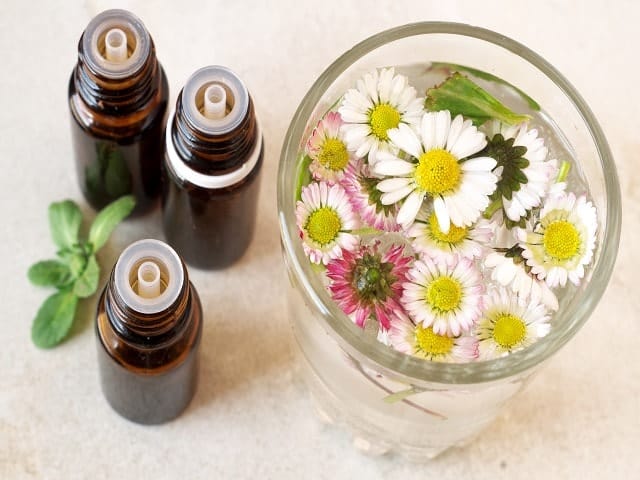
Recipe for Digestive Support
3 drops Ginger
3 drops Peppermint
4 drops Cinnamon
5 drops Chamomile
Blend essential oils in 1 oz of unscented cream or jojoba oil. Massage into abdomen after each meal. This blend of oils can also be used in an inhaler for nausea or motion sickness, morning sickness or overeating.
Andrew’s Aroma Remedy Blends: ~ 3 times a day, morning, noon and night, utilize these blends of essential oils:
Angel’s Mist Indigestion Massage Remedy Blend: this soothing, gentle formula can be used after each meal to help ease digestive discomfort.
Angel’s Mist Indigestion Rub Remedy Blend: easily treats digestive discomforts, gas, constipation, bloating.
Angel’s Mist Nausea Inhalant Remedy Blend: clears sinus passages from inflammation and calms nausea due to digestive cramps, pain or when the smell of food disrupts your ability to eat. Great for morning sickness.
Hydrotherapy
The mysterious and amazing healing power of water has been utilized for centuries. Water cleanses, refreshes and restores all life. We are always drawn to water. Be it a soothing fountain or majestic waterfall. Water is a carrier. It flows. It moves along the line of least resistance to find its way to the ocean where comes and goes in the ebb and flow of tides and waves. The appeal is inexplicable! We crave water, maybe because our bodies are made up of a large percent of it. Maybe because we instinctively know how it can heal us.
Hydrotherapy is the use of water in any form, in the treatment of dis-ease.
Hydrotherapy has a number of uses. Warm water will relax spasm; thus, hydrotherapy has been useful in treating such conditions as muscular strains and sprains, muscular fatigue, and backache. Heat is often used in conjunction with massage or other manipulative or stimulative treatments, such as the whirlpool bath. Sitz baths (sitting in hot water) are effective in the treatment of many disorders. Water is also useful in physical therapy because patients who exercise in a buoyant medium can move weak parts of their bodies without contending with the strong force of gravity.
A warm water enema helps to clean the rectum of accumulated fecal matter. This is not only the safest system for cleaning the bowels, but also improves the peristaltic movement of the bowels and thereby relieves constipation. A cold water enema is helpful in inflammatory conditions of the colon, especially in cases of dysentery, diarrhea, ulcerative colitis, hemorrhoids and fever. A hot water enema is beneficial in relieving irritation due to inflammation of the rectum.
For a relaxing bath, as the tub fills with water add 2 spoons of
Angel’s Mist Deep Soak Sea Salts to the bath water for a soothing, tension relieving soak. Submerging as much of your body as possible, stay in the bath for at least 20 minutes, adding water as needed to maintain the temperature of the bath. End with a cool to cold shower.
An abdominal compress helps those suffering from gastritis, hyper-acidity, indigestion, jaundice, constipation, diarrhea, dysentery and other ailments relating to the abdominal organs.
Nutritional Advise
Water should be a very important part of any nutritional program. 6-8 eight ounce glasses a day. Diet is not the major determinant of acne, but it is important to avoid high-fat, salty and fried foods including foods with iodine (found in shellfish and iodized salt).
Avoid alcohol, butter, cream, caffeine, cheese, chocolate, eggs, fat, fish, meat, poultry, sugar and wheat.
Do not use any dairy products for a month. Acne may develop due to an allergic reaction to dairy products. The fat content of the dairy products can worsen the condition. Add one dairy product at a time to see if the acne returns. See the Allergy Ellimination Diet.
Avoid iodine-rich foods, such as liver, cheese, iodized salt, kelp products, clams, crabs and other shellfish as they have been associated with acne, and should be avoided. Iodine is also used in commercial breads and in processing milk. Consider switching to alternate products. If you use a lot of iodized salt, switch to balanced sea salt.
Increase your intake of fruits and vegetables.
Zinc studies indicate that zinc supplements reduce the severity of acne. In one study, zinc was found to be as effective as oral antibiotic therapy. Nutritional doctors sometimes suggest that people with acne take 30 mg of zinc two or three times per day for a few months, then 30 mg per day thereafter. It often takes twelve weeks before any improvement is seen. Zinc gluconate 30-80 mg daily, helps in healing tissue and helps to prevent scarring.
Vitamin A such as 4,000 IU per day have been used successfully to treat severe acne. Too much Vitamin A can be toxic. Only use the recommended daily dose or Vitamin A from beta-carotene along with other mixed carotenoids. Vitamin A and 400 IU Vitamin E, (use emulsion for easier assimilation), strengthens the protective epithelial tissue.
Vitamin B6 at 50 mg per day may alleviate premenstrual flare-ups of acne experienced by some women. Vitamin B complex (high potency) with extra B6 and pantothenic acid, take 50 mg 3 times a day, is important for healthy skin tone.
Chromium (GTF) used as directed, aids in reducing infections of the skin.
Lecithin one capsule before meals, needed for better absorption of the essential fatty acids.
Primrose oil used as directed on the label, supplies the essential gamma-linoleic acids needed for healing. Unsaturated fatty acids one tbsp. cold-pressed sesame or flaxseed oil (linseed oil) or take in capsule form, needed to keep the skin smooth and soft, and to repair damaged cells.

The Full Spectrum Diet
As a Nationally Certified Herbalist and Licensed practitioner of Acupuncture and Chinese Medicine, Andrew Pacholyk, MS, L.Ac. has spent years developing a natural healthcare plan, which incorporates the benefits of fresh, full spectrum foods based on their color and their properties. A balance of attractive colors in the foods you eat, play an instinctual part as to what the body needs in the moment. The color energy of fruits, vegetables, vitamins and minerals all come into play when furnishing your body with the proper nourishment.
This easy to use system monitors healthy weight by the colors of food on your plate!
The Full Spectrum Diet is based on the proponents of color therapy and the holistic principles of eating mindfully, eating to nourish the body and seeing food in a more natural and spiritual way. Meals rich with different colored fruits, vegetables, meat, chicken, fish and whole grains means you are getting a healthy variety of nutrients that your body needs.
It is a simple way to eat healthy in order to achieve healthy results! Want to know more?
Homeopathy
This medical system uses infinitesimal doses of natural substances to stimulate a person’s immune system and body’s natural defenses. Homeopathic remedies are named for the plant or animal ingredients they are made from. Homeopathy not only offers relief from temporary disorders but, can provide long term healing of a person due to its individual and “holistic” approach. This often leads to a complete recovery from the dis-ease, as well as, providing an improved understanding of the patient’s situation. This type of healing makes it easier and possible to avoid recurrence or relapses in the future and homeopathy stimulates the body’s natural defense system by re-establishing normal immune system and cell functioning.
Ipecacuahna – This is one of the most common homeopathic remedies for treating acute nausea and vomiting. It is effective in treating constant nausea which is not relieved by vomiting, vomiting with gagging, lack of thirst, a clean tongue despite strong feelings of nausea, aggravation of symptoms from warmth, and some relief of symptoms from being in the open air. A headache, cough, or heavy menstrual may accompany the nausea.
Arsenicum – This is another important remedy for acute nausea and vomiting. It is particularly of value when treating nausea and/or vomiting as the result of food poisoning. Generally, the person who needs Arsenicum cannot stand the sight or smell of food and has a strong thirst but can tolerate only sips at a time. The patient may experience burning pains in the stomach, burning pains in the throat as a result of irritating vomit and burning pains in the anus as a result of excoriating diarrhea.
Bryonia – This is a remedy that is known to be effective in treating nausea that is aggravated by motion (the simple act of just getting up or stooping can lead the person to vomit). These people are are also aggravated in a warm room and by heat. Even though their stomach may be sensitive to touch, people who need this remedy are at least partially relieved by lying on their stomach. They may also experience some relief in cool or open air and by resting. These people also have a significant thirst, typically for cold drinks though they may experience some relief from drinking warm fluids. Along with these digestive symptoms, they may experience a frontal headache.
Carbo veg – This provides relief for people who suffer from distension and offensive gas from almost any kind of food. They experience some relief from the release of gas and desire carbonated drinks because they seem to help in releasing it. Any relief that they experience is only temporary, unless they take Carbo veg.
Natrum phos – This is a leading remedy for acid indigestion, which is both a homeopathic medicine and a cell salt. This remedy is indicated in the typical symptoms of acid indigestion with sour belching, sour tasting vomit, and yellow discoloration of the tongue. It is also a remedy useful in people who get digestive symptoms after eating fats.
Nux Vomica – This is a remedy for acute nausea and vomiting, especially when these symptoms are the result of over eating, drinking alcohol, or food poisoning, and often accompanied by gas, bloating, heartburn, and either diarrhea or constipation. This remedy provides relief from hangovers and also helps deal with digestive complaints that are aggravated by therapeutic or recreational drugs. People who need Nux vomica usually experience the worst symptoms in the morning upon waking. These people wake unrefreshed and are highly irritable. They feel some relief from warmth, warm applications, and warm drinks.
Podophyllum – This is a valuable remedy when the person experiences diarrhea with nausea and vomiting. The diarrhea is painless, profuse, offensive, and expelled with gushing force. Typically, much gurgling in the abdomen is felt, and prior to having a stool, much gas released with the diarrhea.
Pulsatilla – This is helpful for people who suffer from indigestion after eating rich foods or pork. They have bloating, abdominal distension, and sometimes a headache. They tend to be not thirsty. This remedy is more often given to children and women than to men.
Traditional Chinese Medicine
Traditional Chinese Medicine (TCM) is the oldest, continually practiced, and professionally administered health care system in the world. It is a documented medical system spanning over 2,500 years based on comprehensive philosophies, rational theories, clinically tested and empirically verified by over 100 generations of highly educated practitioners.
Chinese Medicine is a total system of internal medicine, which is comprised of a diagnostic procedure based on signs, symptoms and treatment styles including acupuncture, herbal medicine, exercise, diet and meditation. It’s foundation is based on the principles of balance; the interdependent relationship of Yin and Yang. Through this balance, health is achieved and maintained.
Traditional Chinese Medicine looks at any disease through a signs and symptoms and then groups them into certain patterns. In TCM, many more spleen and stomach issues occur in the summer and late summer.
Acupuncture and herbal medicine are effective therapies for the treatment of many issues a person might experience throughout their lifetime. Acupuncture redirects your energy (Qi) into a more balanced flow. It provides support to the underlying energetic spheres affected by aging, poor digestive circulation and the pituitary-hypothalamus-axis.
In Eastern medicine
The stomach is the hollow organ that stores and digests a large portion of food which is broken down into a solution called chyme. Glands lining the stomach secrete hydrochloric acid that dissolves food particles and protein-digesting enzymes, called pepsin. The pancreas is a gland located behind the stomach. From its exocrine portion it secretes digestive enzymes and a fluid rich in HCO3- ions to neutralize the acid from stomach. The liver secretes bile. Bile contains HCO3- ions and bile salts to solubilize fats. Bile reaches the gall bladder through hepatic ducts and is stored in the gall bladder between meals. During a meal, bile is secreted from the gland by smooth muscle contraction and reaches the duodenum portion of the small intestine by the common bile duct. This is the gastric phase which is initiated by distension, acidity, and the presence of amino acids and peptides in the stomach. This phase is mediated by short and long reflexes and activates the secretion of gastrin.
The small intestine is where most of the nutrient absorption occurs during digestion. The small intestine is divided into 3 segments; the duodenum, jejunum, and ileum. Amino acids, mineral salts and monosaccharides are absorbed by a transporter mediated processes as fatty acid (water) diffuse passively through the system. Undigested material is passed to the large intestine, where it is temporarily stored and concentrated by reabsorption of salts and water. Finally, catastalsis is the rhythmic contraction and relaxation of the muscle of the intestines. The last part of large intestine expels the feces through the anus. This is the intestinal phase which is initiated by distension, acidity, osmolarity of digestive products in intestine and is mediated by GI hormones and short and long neural reflexes.
Worry, pensiveness and mental overwork often negatively affect the transporting and transforming function of the spleen and contribute to poor water metabolism resulting as internal dampness. Organs of the body other than the spleen also contribute to the action of water metabolism. Dampness and its combinations with wind, cold and heat cause obstruction of Qi and blood or blockage of the meridian channels.
Traditional Chinese medicine believes how we eat our food is also very important. All foods are categorized into temperature, from hot to cold and flavors (pungent, spicy, sweet, sour and salty). Different temperatures and flavors of food influence the body in specific ways. One should try to include all flavors and a balance of temperatures in every meal. If too much of one type of food is consumed it can create an imbalance with in the body.
Visit Your TCM practitioner for a proper diagnosis and treatment or call Andrew at 917 843 3623 to schedule an appointment.
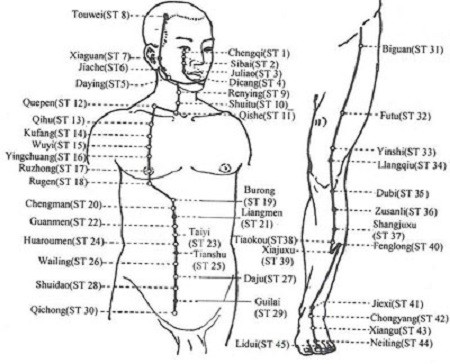
Acupuncture and the Stomach
The Stomach meridian, in the Chinese Medicine paradigm, starts toward the top of the head and travels all the way down the body to the toes. This channel effects every organ associated with transforming, transporting and digesting food. Exceptional for treating so many issues, this channel has a wealth of healing points that must be explored!
DIY Acu-Pressure
Acupressure is a great way to relieve congested areas, improves blood circulation, relax the muscles and increase metabolism. Use your index finger or thumb. Apply pressure slowly, gradually increasing, before you release. 1 or 2 minutes for each point.
Try these three points on the body and leg:
ST (Stomach) 20 Assuming Fullness
Location: On the upper abdomen, 5 cun (approximate inch) above the center of the umbilicus, 2 inches lateral to the anterior median line.
Indicated for: Abdominal pain, bloating, hiccups, gastric pain, vomiting.
Anorexia, poor appetite, diarrhea.
Shortness of breath, wheezing.
ST 25 Celestial Pivot
Location: On the middle of the abdomen, 2 inches lateral to the umbilicus.
Indicated for: All intestinal issues – constipation, diarrhea, dysentary, distention, pain, masses/accumulations of any type.
Irregular menstruation, painful menstruation, fibroids/cysts, fertility issues and leukorrhea.
Connects the Upper and Lower Warmers (pre & post natal Qi).
ST 36 Leg Three Li
Locations: On the anterior aspect of the lower leg, 3 cun below ST 35, one finger-breadth (middle finger) from the anterior crest of the tibia.
Indicated for: Tonify deficient Qi and/or Blood.
Tonify Wei Qi and Qi overall – low immunity, chronic illness, poor digestion, general weakness, particularly with moxibustion, very important acupuncture point for building and maintaining overall health.
All issues involving the Stomach a/or the Spleen – abdominal/epigastric pain, borborygmus, bloating, nausea, vomiting, GERD, hiccups, diarrhea, constipation, etc.
Clear disorders along the course of the channel – breast problems, lower leg pain.
Earth as the mother of Metal – will support Lung function in cases of asthma, wheezing, dyspnea.
Psychological/Emotional disorders – PMS, depression, nervousness, insomnia.
Ayurveda
The principle medical system of India is known as Ayurveda and is over 5,000 years old. This “Science of Life” is considered the art of living in harmony with nature. Developed from the ancient text of The Vedas, Ayurveda views the human body as a “homunculus” of our cosmic Universe, regulated by the balance between three primordial humours, call Dosha.
Your dosha are your Ayurveda mind and body type. There are three doshas in Ayurveda: Vata, Pitta, and Kapha. We each have all three of the doshas in our physiology, just in different proportions, so your dosha is unique and personal; it is like your fingerprint.
An imbalance in Vata results in the accumulation of toxins and improper digestion.
An imbalance of Pitta affects the blood and liver, increasing for inflammation.
An imbalance of Kapha, creates improper digestion, inflammation, and the over production of glucose which creates the perfect environment for the overgrowth of bacteria resulting in candida.
Digestive Health
Geared toward the health and well-being of each individual dosha. Maintains healthy digestive acid levels and a healthy stomach lining while supporting a comfortable post-meal experience. Consider Vata Digestion, Pitta Digestion or Kapha Digestion formulas.
Neem
Neem has traditionally been used to purify the blood, cleanse the liver and support the immune system. It is also commonly used to support healthy skin and to maintain healthy blood glucose levels. This very famous and popular herb is found whole, in powder, pills and oil.
Triphala
This combination of three fruits is one of the best bowel formulas in the world! Assists natural internal cleansing, Gently maintains regularity, nourishes and rejuvenates the tissues, supports healthy digestion and absorption and is a natural antioxidant.
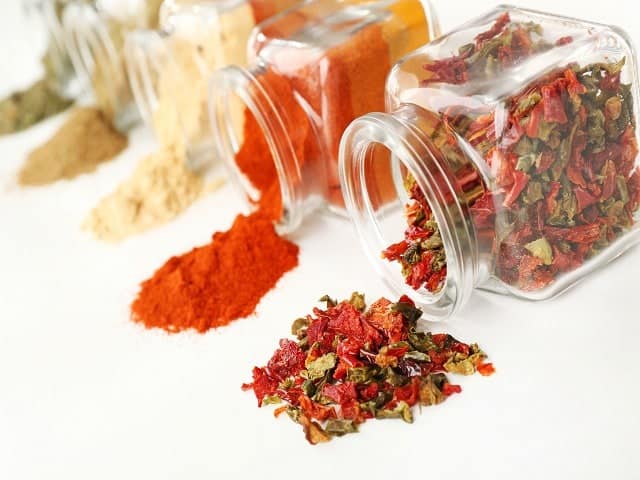
“Neem Clean”
Neem (Azadirachta indica), is a tree. The bark, leaves and seeds are used to make medicine. The stem, root bark, and fruit are used as a tonic and astringent. The leaves are ground to make tea or apply directly to the skin as a poultice for healing skin disorders.
- Supports a healthy digestive environment in the GI tract*
- Encourages proper fat and water metabolism*
Digestive Tea
Turmeric (Curcuma) is a plant and a staple in Indian cuisine and medicine. You probably know turmeric as the main spice in curry. Fennel Seed (Foeniculum vulgare) is a sweet, anise flavored digestive herb. Boil 5 cups of water in a covered saucepan and add 1/2 teaspoon each of turmeric and fennel seeds. Let this mixture steep for at least 10 minutes with the lid on. Strain out the seeds and pour liquid into teapot. Sip small amounts throughout the day and watch your skin begin to glow.
Emotional Aspect:
There is an emotional aspect to every illness. Often times, it is the emotional thoughts or “excess emotions” that will lead to illness. The following therapies are utilized for calming the mind, help with stress relief and focuses on our mental powers over any situation. The ability to balance your emotional, mental, physical and spiritual self are exceptional tools on your healing journey. Here are some suggestions:
The Stomach is a hollow organ used to hold nourishment and process it. It is the perfect correlation to how we digests ideas.
When we have an inability to assimilate the new, or change… when we can’t seem to take in new ideas, or “can’t stomach it” or “can’t digest it”, it is often our gut reaction to how we feel about something.
Bad reactions in our stomach tend to be associated with… dread, fear of the new, inflexible opinions, fear of letting go or our need for holding onto old beliefs and ideas.
Embrace optimism and reform your old belief system. Our attitudes and beliefs create our mind/body structure.
The Building Blocks of Change
Change is inevitable.
Our lives are made up of the building blocks of change. Change creates the person we must grow to be. Change happens for a reason. That reason is to allow us possibilities we may not have seen in the first place. This can be traumatic or it can be less so.
The single most important point you can make about change is that in most cases it’s not what faces you that’s the problem, it’s how you react to it.
Music As Therapy
Vibrational medicine, which validates that everything in the universe is in a state of vibration and the frequency at which an object or person most naturally vibrates is called resonance. The chakras, bones, and organs in the body all possess a different resonant frequency. When an organ or part of the body is vibrating out of tune or non-harmoniously, it is called “dis ease” or disease. A body is in a healthy state of being when each cell, each organ creates a resonance that is in harmony with the whole being.
Music is a powerful tool that can be used in so many ways. It has been proven that the type of music that makes a person relax or become receptive is not any one kind. It all depends on the individual and their affinity with it.
Metaphysical Thoughts
The power of your mind and your belief system has everything to do with the condition, the speed and the way that you heal.
* Our Belief System is one of the major factors that can get us through situations or can cause our life to crumble around us! I do believe that there is a lot of innate goodness and balancing our minds do subconsciously to get us through hard times. The other portion of this is how we “program” ourselves to deal with any given situation.
* Our self-confidence and self-love are often the key to opening and strengthening this portion of our thoughts which in turn emanates from ourselves!
* Energy follows thought. Program thought to be positive and your energy will reflect it!
* Really appreciating what we DO have as opposed to what we would like to have, sometimes makes a significant difference. This is always an important element in healing that is often neglected.

Yoga Breath
Sit with your legs crossed in a comfortable position. Breathe slowly and evenly from your diaphragm, through your nose. Fill your lower abdomen, lungs, then chest with air. Hold for a four count then slowly exhale the air out from your chest, lungs, then lower abdomen. Repeat 3 or 4 times. That’s it! Just allow your shoulders to drop and your face relax as you breath, deep.
Also consider Breath Exercises, Cat and Cow, Lying Down or Seated Twist, Bridge and Downward Facing Dog, Fish Pose and Child’s Pose.

Tummy Meditation
Meditation will calm an agitated mind (and stomach), By creating optimal physical and mental health, this can undo our sense of separateness, which is the common root of fear and misery.
Meditation unifies our consciousness, putting us in touch with our higher self and connect us to higher consciousness. Meditation restructures the mind, allowing us to achieve our full potential as human beings.
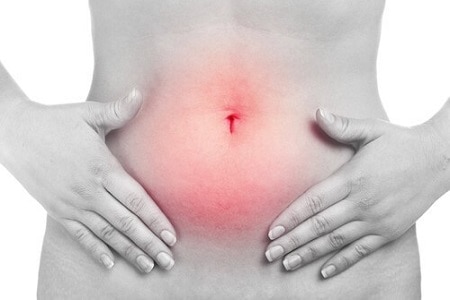
Color Therapy
Orange – In using orange — you can learn to understand how the stomach tells us about our physical situations. If the Spleen Chakra is out of balance, our stomach is usually the first thing to warn us.
Yellow – In using yellow — it has a powerful effect on the nervous system and assists the left brain in operation. The Solar Plexus Chakra – when it is balanced we should not suffer from ulcers, gall stones, catarrh of the large intestine or diabetes.
Crystal Reference
Crystals have both piezoelectric and pyroelectric properties. This means that the polarities of the crystal will change when subjected to pressure or heat (even body heat from the hands). This will radiate energy from the crystal due to this reversal of polarities. It provides the transfer, storage and transformation of energy.
Offering a balanced energy field, energy modification, amplifies both energy and thought, clarity in thinking, and harmony and alignment with the Chakra energy areas.
Chakra balancing stimulates the seven main energy sources, which govern all the major organs and psychologically alters and clears the body’s energy in order to allow healing to take place. This means that the polarities of the crystal will change when subjected to pressure or heat (even body heat from the hands). This will radiate energy from the crystal due to this reversal of polarities. It provides the transfer, storage and transformation of energy. It offers a balanced energy field, an energy modification, which amplifies both energy and thought, clarity in thinking, and harmony and alignment with the Chakra energy areas.
The Solar Plexus Chakra is located right below the diaphragm, near the stomach.The primary energy of this Chakra is free will. This chakra gives you strength and provides the ability to hold energy for personal power and emotional control. When it is unbalanced, it produces pain, burning, poor digestions, rage and destructive anger. Physically, it governs the pancreas, liver, spleen, stomach, gall bladder and the nervous system.
The Complete Chakra Kit stimulates the seven main energy sources which govern all the major organs and psychologically alters and clears the body’s energy in order to allow healing to take place.
Crystal Medicine Pouches are based on the Zodiac Medicine Pouches, each pouch comes with several crystals for cleansing negativity and the best way to use, cleanse and energize them in order to get what you want out of life!!
Crystal Empowerment Pouches are individually filled with several crystals to strengthen and enhance the best energy for each situation. Each suede pouch comes with several crystals and best way to use, cleanse and energize them in order to get what you want out of life!!
Crystal Elixirs are wonderfully scented oils come in .05 ounce roll-on bottles and contain genuine crystals in vibrationally compatible essential oil blends. They are fantastic for Chakra work, energy healing, as an Aura Balancer, as a balancing perfume oil or simply as a “refresher” for your Gem Potpourri. Crystal Elixir oil blends are used externally.
Gem Essence are the infusion of crystals, spring water and the power of the sun/moon in a bottle! These essence work in harmony with the body by interacting with our bio-sheath and are natural and self-adjusting. When crystals are activated by natural sunlight, they transfer their vibrational signature into water, creating a remedy that is safe, effective and used in conjunction with all modalities of healing. Gem Essence waters can be used internally.
The Body Crystalstm: Stone massage is a popular form of relaxation dating back thousands of years. The Body Crystals are tools used to deliver deep relaxation, helping with detoxification, melting tension and reducing pain. Learn more about these amazing stones!

Meditation & Crystals
Meditation won’t necessarily get rid of your acne, BUT, it will alleviate much of the angst and anxiety associated with it! Calming the mind and central nervous system have a direct affect on how our body “vibrates” and how we choose to handle stress as it comes at us. The more you meditate, the more able you become in handling difficult situations!
~ Use a crystal of your choice or one mentioned. Sit comfortable on the floor and hold your stone or lie down and place the crystal on your Third Eye or Solar Plexus.
~ Close your eyes. Take several deep breaths. Feel the crystal rise and fall as you slowly inhale/exhale. Allow your body to melt into the floor at each breath. Take this time to find your center. Let go of those things which hold you back. With each inhale, take in that which you deserve. With each exhale, release all that tension.
~ When you feel more calm and connected, slowly open your eyes. Give yourself some time to recover. You may even want to journal about your experience.
Crystal Associations
Allowing emotions to be expressed is the goal with crystal therapy. Crystals to consider for digestion are Carnelian, Orange and Yellow Calcite, Citrine, Howlite, Clear Quartz, Moonstone, Yellow Jade, Jasper and Peridot ..

Study Energy Medicine at Home
The Peacefulmind.com Homestudy Courses make it possible for anyone to study energy medicine at home, on your time! These certifications programs are offered by the National Association of Holistic Wellness
*Transitions: The Transformational Guide and Workbook for Creating Great Health This is the culmination of years of Andrew Pacholyk, MS, L.Ac. clinical work. This is a manual you can use, whether you are healthy or ill or somewhere in between and you want to re-balance your mind, body and spirit to become the whole person you can be! This workbook gives you a plan to take care of yourself. It can be used over and over to find balance and keep yourself as healthy as possible. It gives you “tools” to use when and where you need them. It helps to evaluate where you are in your journey and offers ways to get you exactly where you want to be! Want to know more?
*The “Color Elite” Color Therapy Certification Course Andrew Pacholyk, MS, L.Ac. has finally published his most complete healing course using the power of color and light therapy. This ultimate guide to chromotherapy teaches you about color and every aspect of it, how it is used in different therapeutic settings and how it has become such a great healing modality, no matter what profession you are in you will learn how to incorporate color into your daily life! Want to know more?
*The Crystal Light Crystal Therapy Course This incredible course is our biggest and most popular course on the internet! This is the study of crystals and how to heal with earth’s precious gems! Want to know more?
*Chakracology – A Workbook and Manual This workbook format allows you to look at the energy of the Chakra and how they affect us on a daily basis. The book allows you to work through each center on a mental, spiritual, as well as a physical level and then find ways to re-align, balance and manage your energy in a positive way! Want to know more?
*The Healing Art of Touch – Massage Therapy Homestudy Learn the art of touch and massage therapy through Andrew’s very extensive course. Complete anatomy lessons, varied techniques and amazing information is offered in this course. Also learn the business aspects of massage, how to cope with clients that are difficult and energy transference are just a few of the many topics covered! Want to know more?
*What’s Your Heart Telling You? Finding Love and Romance – The Workbook and Journal Andrew Pacholyk, MS, L.Ac. has now published his newest work based on years of personal intimacy, clinical experience, counseling and client research on the ways to navigate love, sex, romance and relationships in a modern day world. Andrew has devised this very thorough workbook and journal with questionnaires, exercises, quotes, tips, meditations, feng shui, aromatherapy, massage and herbal applications for creating the perfect scenario for finding, coping and keeping love in your life! Want to know more?
*The Feng Shui Journal The Peacefulmind.com Feng Shui Journal makes it possible for you to improve relationships, maximize career potential and enhance your environment! * We are honored to offer the Feng Shui Journal for beginner to advanced Feng Shui practitioners. This journal covers an extensive background on Feng Shui techniques history, usage, clearing, cleansing, manifesting and helpful information in order to bring balance back into your life! Want to know more?
What are your experiences with digestive health?
Sharing your own experiences often helps others. We’d love to know in the Peacefulmind Community.


